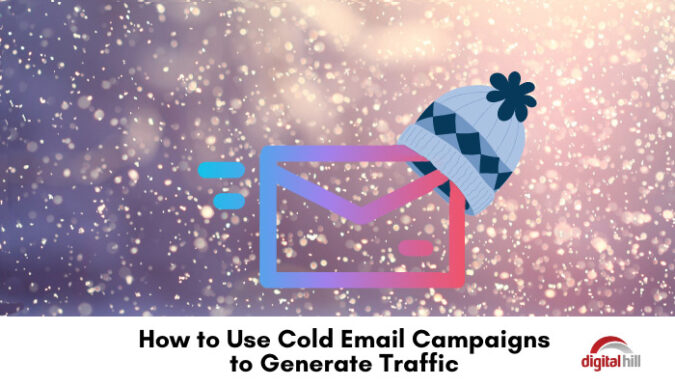How to Use Cold Email Campaigns to Generate Traffic

Cold emails work. There’s a common misconception that cold email campaigns are old-fashioned or even outdated as a marketing strategy. Be wary of the fear-mongering.
According to Constant Contact and MailChimp, the average open rate for cold emails is in the 14% to 23% range. This isn’t too different from standard email marketing, with an average open rate of 21.3%. More importantly, cold emails convert at 15%, whereas the standard email conversion rate is 2% to 5%. This means cold email generates more revenue.
5 Steps to Generate More Traffic from Cold Emails
The best part about cold emailing is that it’s simple and inexpensive to implement. The following are five steps to help you get started.
1. Understand your audience
Only 8.5% of cold emails get a response. This tells us that many marketers send out their emails without doing their due diligence. Unfortunately, many recipients are likely to ignore invaluable emails out of the blue.
Therefore, the first step is to learn about your target audience and attempt to connect with them at some level. For instance, a savvy marketer sends out a few social media messages before sending an email. This way, you will know what type of leads you are working with. For example, travel agent leads will respond to different messages than real estate leads.The user is more likely to respond to your emails if you’ve exchanged a few messages on Facebook or LinkedIn.
2. Write heart-winning subject lines
Few things are more important than the subject line when writing outreach emails. In fact, you may as well forget about the sale if your subject line doesn’t get their attention.
First, make the subject line short and concise. No one has the time for a complex email header. Secondly, make it descriptive. A descriptive subject line summarizes the email body. Finally, always personalize your subject lines. Addressing the recipient by name is one of the most effective personalization tricks.
3. Add a CTA
A common mistake email marketers make is sending the email without a call to action (CTA). This is as good as not sending the email at all, as most recipients will ignore it anyway. If you want a response, a CTA is a must.
Most importantly, however, it must be a useful call to action. Start the CTA with a strong command verb, and add persuasive words to convince the customer to take action. Words that provoke emotion work best. Above all, make your CTAs short and sweet. Ensure you position them strategically, with the user’s browsing device in mind.
4. Include social proof
We are social beings who naturally live in groups and families. Therefore, your target customers are more likely to open and respond to your emails if you can show that they’re not alone in following you. Demonstrate that hundreds or thousands of others follow your brand and receive your emails daily.
A common way to do this and provide social proof to your email followers is by including stats about the number of users on your email contact list. For instance, you can indicate that “65,000” read your emails daily. Adding your social media handles is another excellent way to add social proof, as users can visit you there as well.
5. Send short, concise emails
Although a lot of focus goes on the subject line, the body is just as important. First, avoid lengthy outreach emails. The tactic works for newsletters but not cold emails. Instead, a single short paragraph is sufficient and effective in most cases. Aim to make it 30 words or less. If you must write more words, break it down into two paragraphs. However, three paragraphs is too long for a cold email.
Remember, the email body must be short and concise. Multiple grammatical mistakes, broken sentences, and exclamation marks are often red flags and will deter readers.
Summary
Done right, cold emailing has the potential to revolutionize your businesses. It can increase site traffic, leads, and customers. Additionally, it sets a strong foundation for customer relationships.
